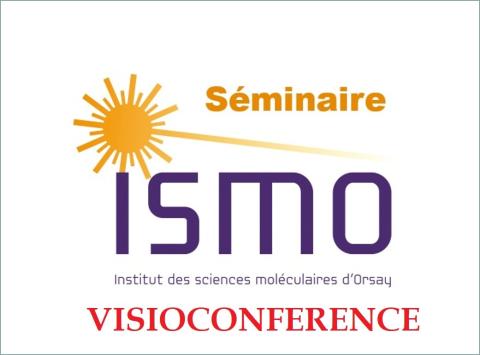
Soutenance de thèse de Jennifer Joseph EN VISIOCONFERENCE
Thèse de Jennifer Joseph
Spectral and temporal resolution of photoionization dynamics in atoms and molecules
This thesis investigates the attosecond photoionization dynamics of atoms and diatomic molecules by probing photoelectron angular distributions in the laboratory frame and in the molecular frame. The experiments combine electron-ion coincidence 3D momentum spectroscopy and advanced XUV light sources at Université Paris-Saclay : the PLEIADES and DESIRS beamlines (Synchrotron SOLEIL), and the 10 kHz beamline at the ATTOLab platform (L’Orme des Merisiers, CEA). With the main objective to probe spectrally and temporally resolved molecular frame photoelectron angular distributions (MFPADs) characterizing the photoionization dynamics, the thesis is organized in two parts, i.e., time-resolved studies in atomic photoionization (Ar, Ne) and spectrally resolved studies in molecular photoionization (N2, CO, NO).
For the time-resolved photoionization studies of atoms at ATTOLab, the measured angle-resolved XUV-IR RABBITT spectra for valence ionization of Ar(3p6) and Ne(2p6), analyzed based on a developed unified formalism, provide an angular mapping of two-photon ionization time delays. For the spectrally resolved studies on N2 and CO, complete photoionization experiments, i.e., accessing the relevant partial wave dipole matrix elements, were performed at SOLEIL at photon energies in the 25 eV- 60 eV range, probing single-photon ionization dynamics of the main dissociative photoionization processes in the inner valence energy region. The reported MFPAD energy dependence for these processes, compared with that computed by Prof. R. R. Lucchese (LBNL) using the multi-channel Schwinger configuration interaction method, allows for a description of the photoionization dynamics across identified shape resonances. The results obtained in this work thereby address two routes for the determination of emission time delays in molecular photoionization.
Le lien pour assister à la thèse est à demander sur le site de l'ISMO :
http://www.ismo.universite-paris-saclay.fr/spip.php?article2496
Thèse de Jennifer Joseph
Spectral and temporal resolution of photoionization dynamics in atoms and molecules
This thesis investigates the attosecond photoionization dynamics of atoms and diatomic molecules by probing photoelectron angular distributions in the laboratory frame and in the molecular frame. The experiments combine electron-ion coincidence 3D momentum spectroscopy and advanced XUV light sources at Université Paris-Saclay : the PLEIADES and DESIRS beamlines (Synchrotron SOLEIL), and the 10 kHz beamline at the ATTOLab platform (L’Orme des Merisiers, CEA). With the main objective to probe spectrally and temporally resolved molecular frame photoelectron angular distributions (MFPADs) characterizing the photoionization dynamics, the thesis is organized in two parts, i.e., time-resolved studies in atomic photoionization (Ar, Ne) and spectrally resolved studies in molecular photoionization (N2, CO, NO).
For the time-resolved photoionization studies of atoms at ATTOLab, the measured angle-resolved XUV-IR RABBITT spectra for valence ionization of Ar(3p6) and Ne(2p6), analyzed based on a developed unified formalism, provide an angular mapping of two-photon ionization time delays. For the spectrally resolved studies on N2 and CO, complete photoionization experiments, i.e., accessing the relevant partial wave dipole matrix elements, were performed at SOLEIL at photon energies in the 25 eV- 60 eV range, probing single-photon ionization dynamics of the main dissociative photoionization processes in the inner valence energy region. The reported MFPAD energy dependence for these processes, compared with that computed by Prof. R. R. Lucchese (LBNL) using the multi-channel Schwinger configuration interaction method, allows for a description of the photoionization dynamics across identified shape resonances. The results obtained in this work thereby address two routes for the determination of emission time delays in molecular photoionization.
Le lien pour assister à la thèse est à demander sur le site de l'ISMO :
http://www.ismo.universite-paris-saclay.fr/spip.php?article2496
